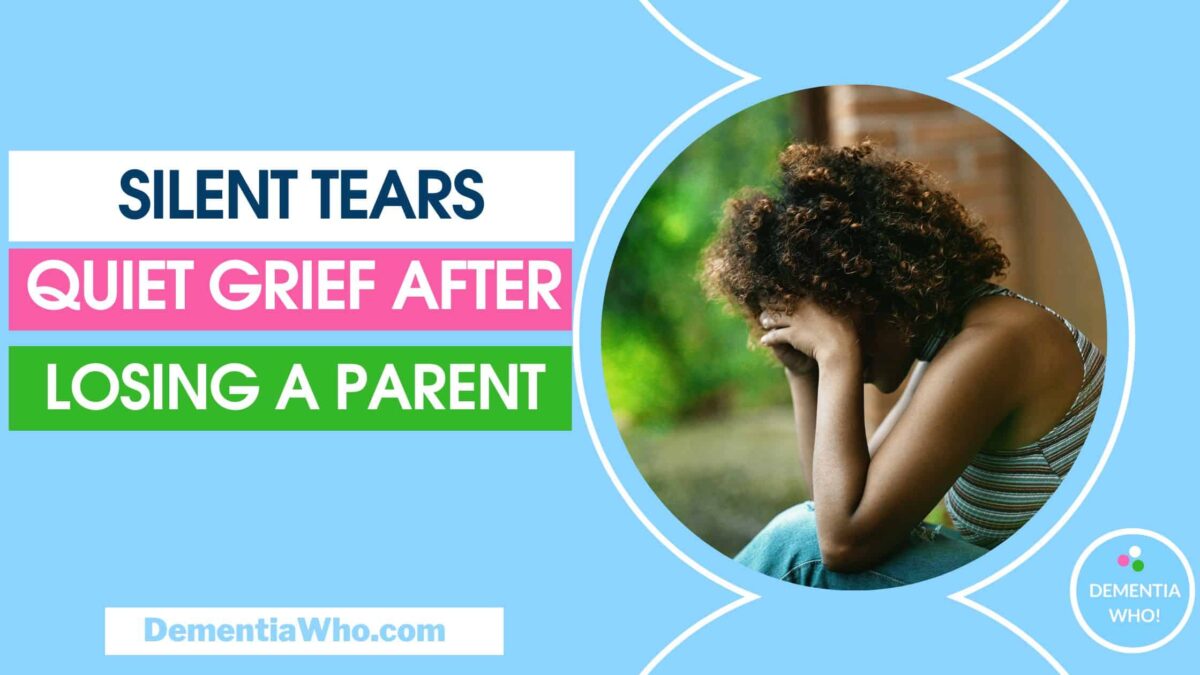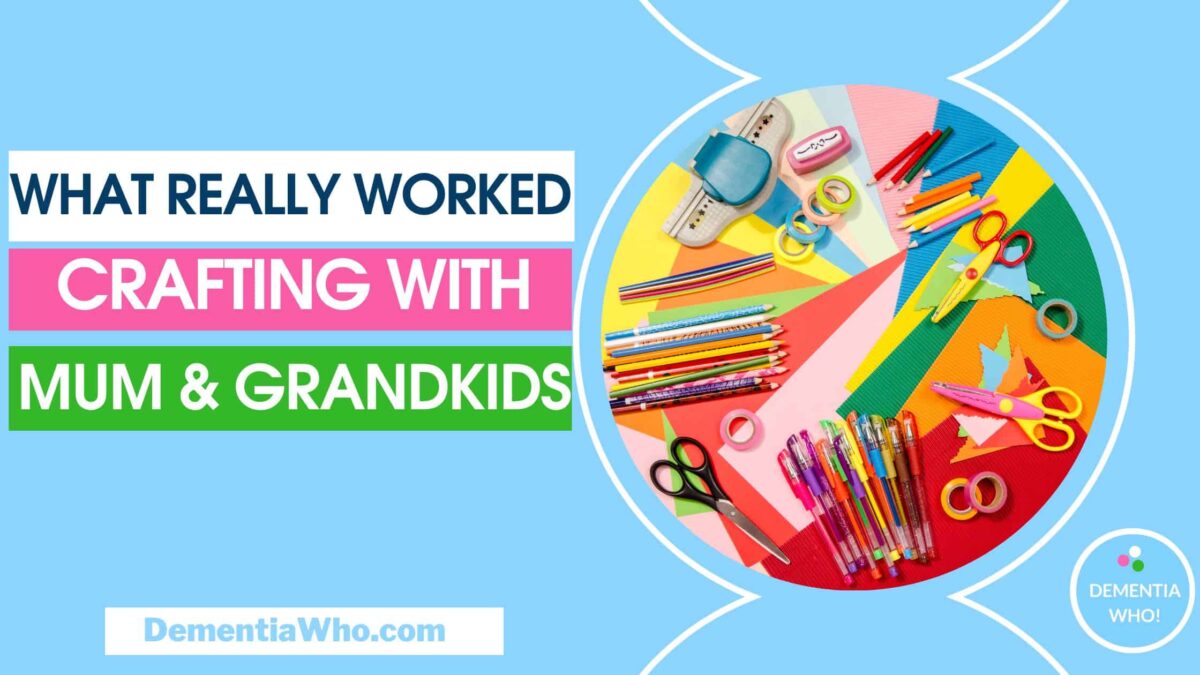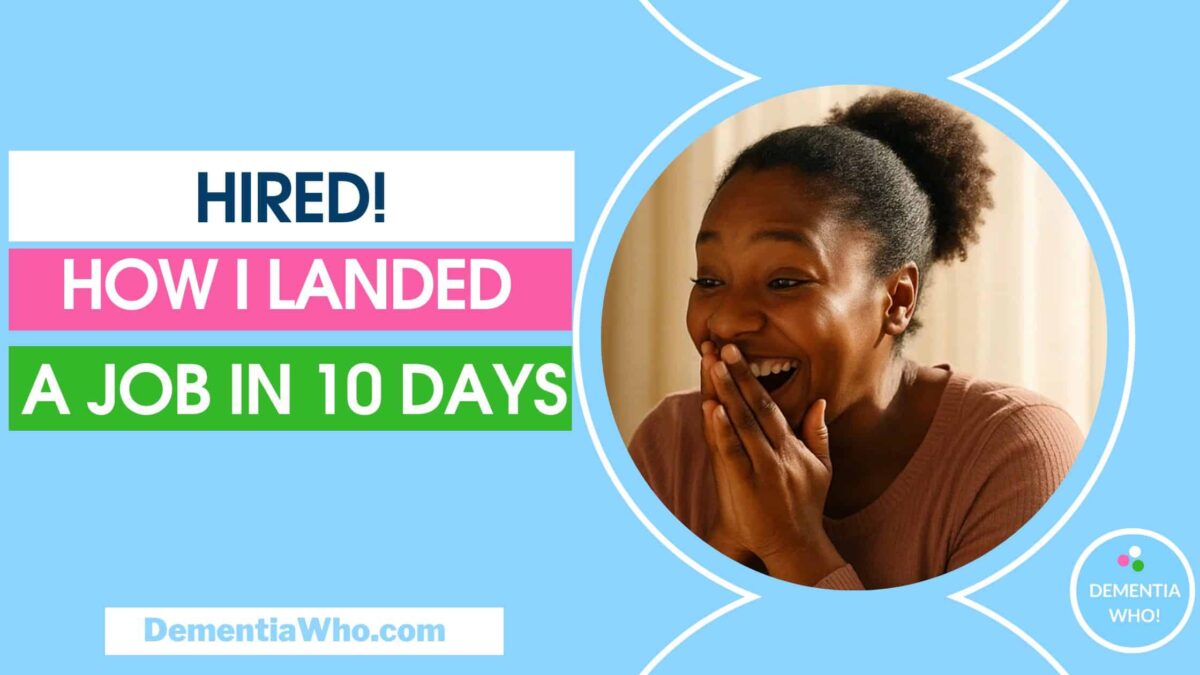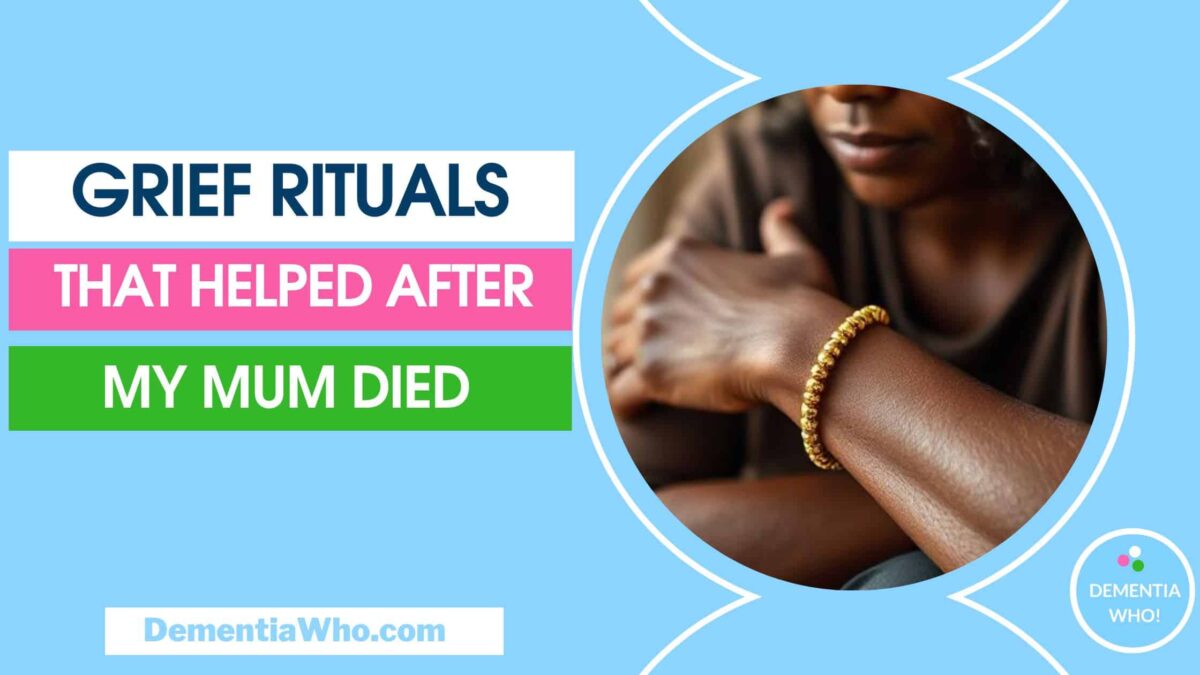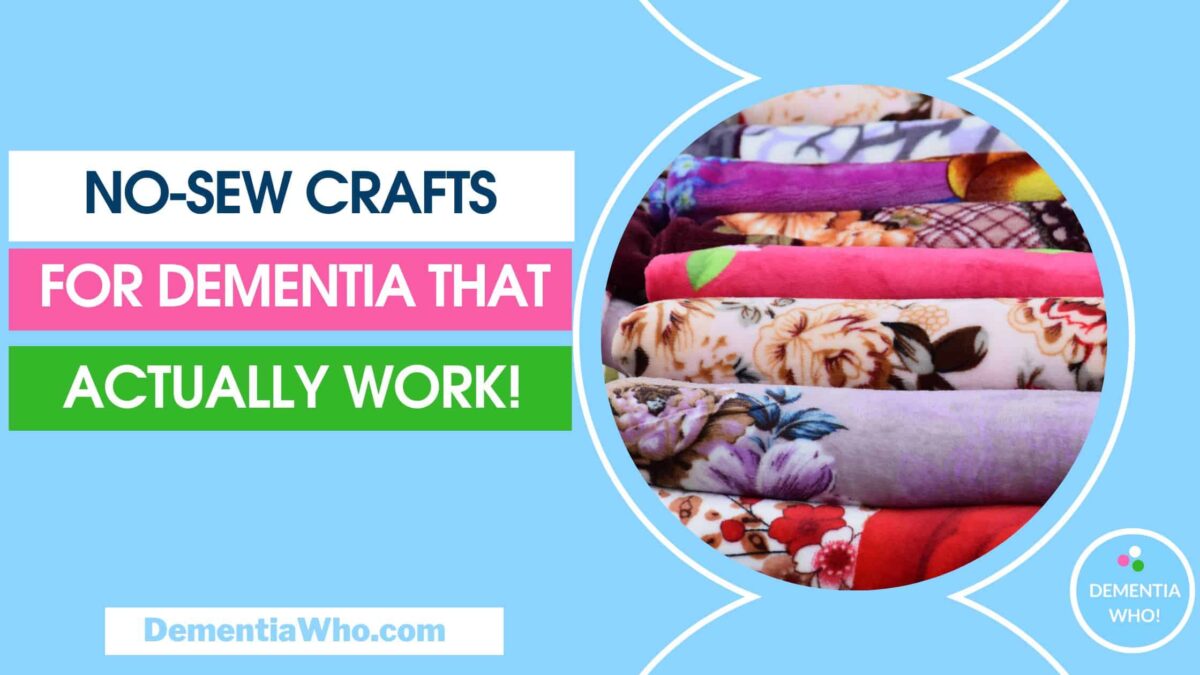There are a lot of tools available to both caregivers and those with dementia. This post focuses on Technology Aids for Communication with Dementia.
These technological tools are dependent on how easy they are to use and to adopt in everyday life. Whatever tool you use has to suit the person they are meant for. There’s no point in using tools that are ignored, not part of your skillset or too complex to use every day. So think about what works for you.
There are two main areas that I’ve focused on for support with communication. We don’t need to go all high-tech for simple ways to improve communication with someone with dementia
Low Tech Options
There are a wide variety of low tech options that can be used to help communicate with someone with dementia, have a think of the little things that you do but probably don’t class as tech but in reality it is, a tool that supports your loved one’s ability to function in day to day life.
Noticeboard
A simple noticeboard or whiteboard can be used to leave messages of reassurance, and provide information on whereabouts, dates, weather etc. We recently saw how helpful that was via a viral tweet of a daughter’s message to her mother
Notebooks/Post-It Notes
Notebooks or Post-it notes are the most low-tech option available. These can be used for labelling or for noting down thoughts that you want to communicate. We use a notebook when we have professional caregivers so that they can leave messages as part of their handover to family or others.
Picture books or Picture cards with simple instructions can be used if your loved one has difficulty in communicating their wishes e.g for food or other choices. This website Amy Speech & Language Therapy has amazing communication boards that have been developed for speech therapy that can be easily used.

Picture ID telephones
You can buy home telephones which use picture ids for contacts. Once they are programmed in, they are very simple to use.

Life Story Books
Life Story books or Photo Albums are great conversation starters, an activity that you can both partake in especially when putting together a life story
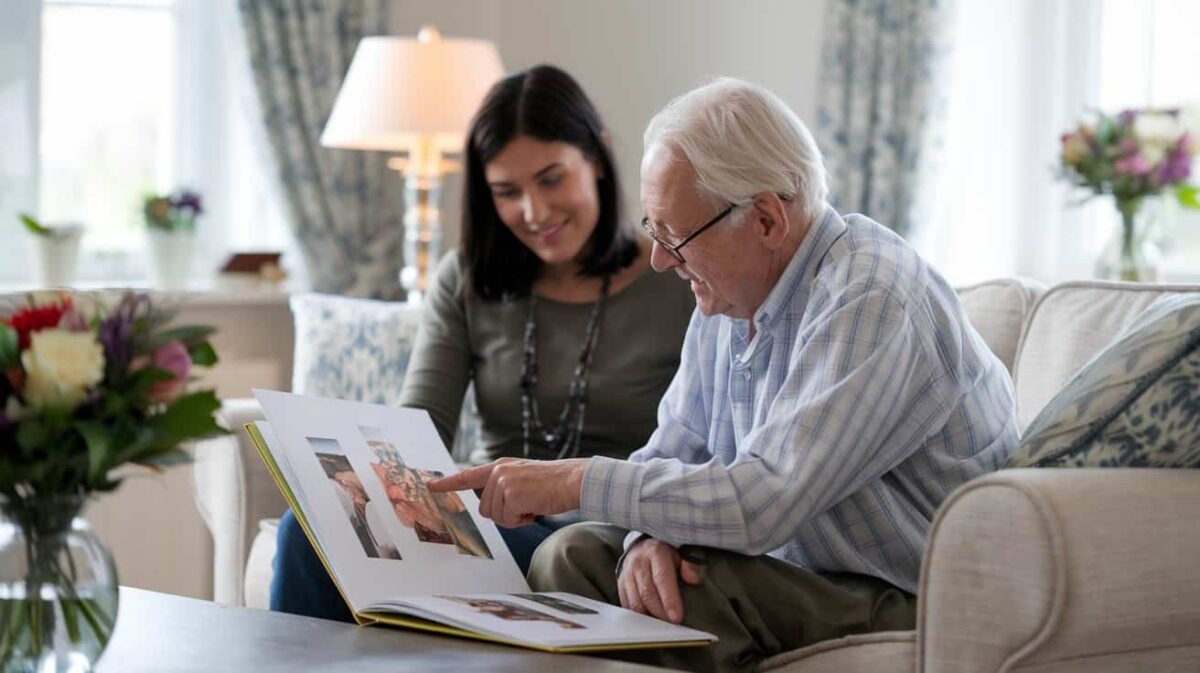
Dementia Clocks
Dementia Clock/Reminders that provide the date and time of day, and also can have instructions on them like time to take a drink, take your meds etc

High Tech Options
Email is a familiar tool to most but has the added benefit that users can take the time they need to read or review. If passwords etc are an issue then you can use a tablet with an email app installed that stays open and doesn’t need a password to be entered every day.
Online Calendars
Online Calendars with reminders – these are great for communicating important tasks, times or appointments and they can be integrated into voice assistants like Alexa, or Google that vocalising these reminders
Video Calls Apps & Devices
Video Chat Apps – Skype, Facetime, Google Duo, Zoom, WhatsApp, Facebook Messenger and many more allow for calls to be made via video. We’re all more familiar with them since COVID and its a very powerful communication tool if used with adaptions for those with dementia. The use of these devices may need support in setting up and of course need good wifi!
Video call devices – Google Nest Hub, Facebook Portal & Amazon Echo Show – These are all free-standing devices than can be set up next to a loved one. All they need to do is pick up a call using a green button or using voice assistants to place a call. You also need to make sure it’s set up with contacts and relevant privacy settings to protect your communications. Once set up, it’s also heavily reliant on a good wifi network but it’s probably the easiest option for those less tech-savvy. They can remain plugged in so no issues with charging or replacing batteries either.
Baby Monitor
Baby Monitor is a simpler way to communicate without any actions needed to be taken by the user. You can just set up a baby monitor and use that to communicate (one way in this case) allowing you to see them (privacy issues would need to be agreed upon beforehand) and for them to hear you.
Talking Mats
Talking Mats app is a tool developed by Stirling University to help those with communication issues to express their views. It uses a simple mat and computer-generated pictures/symbols that can be placed next to a scale describing their well-being. It’s basically a digital communication board.
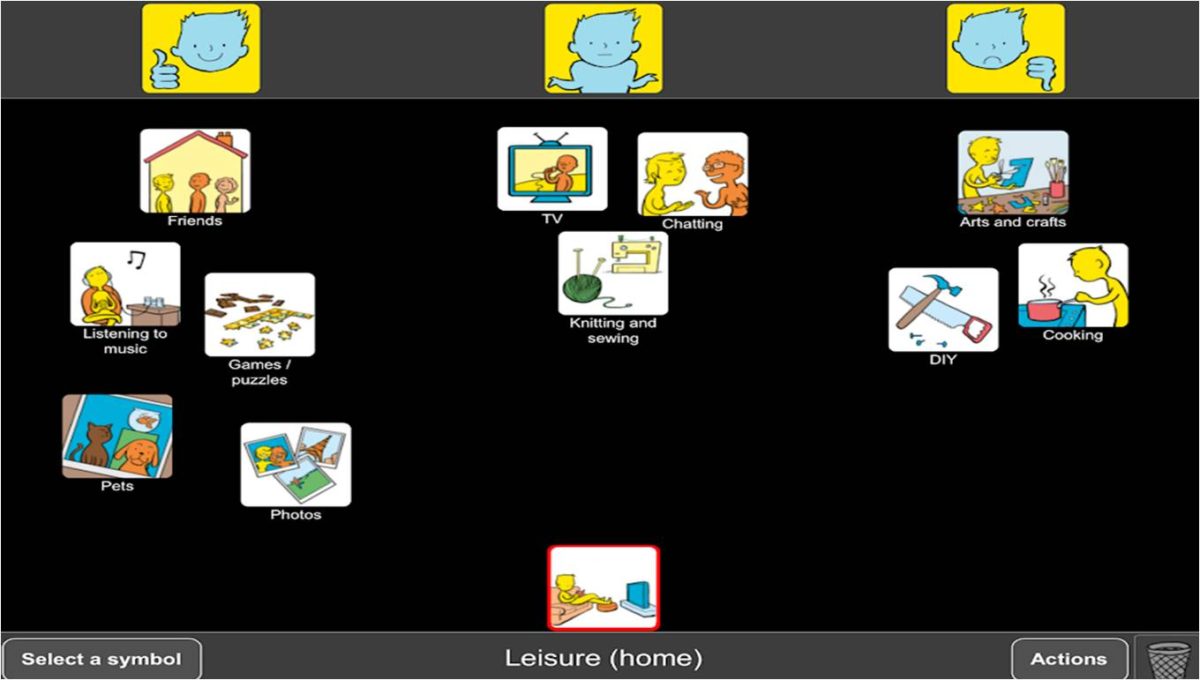
These are a few of the communication aids that can be used to support your loved one with dementia. Technology is changing every day and more and more tools are becoming available.

